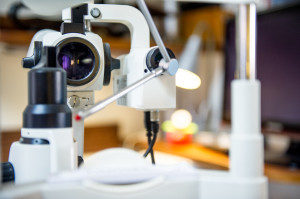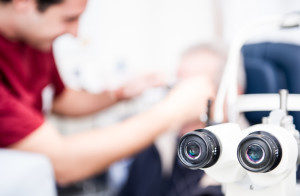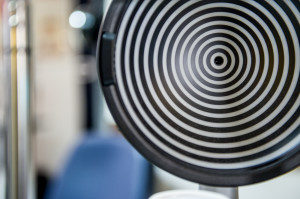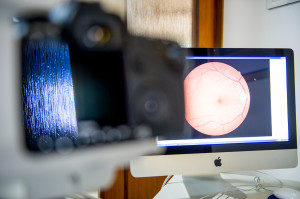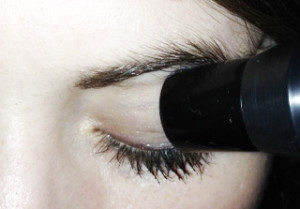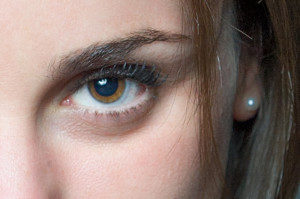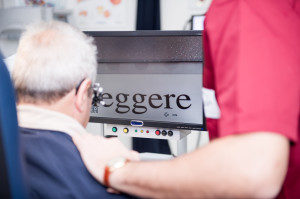I nostri Servizi
Presso lo Studio Medico Fanton è possibile usufruire di Servizi Diagnostici all’avanguardia ed effettuare molteplici Trattamenti Oftalmologici.
Siamo inoltre in grado di offrire:
- Accesso per i pazienti diversamente abili
- Cartella clinica digitale
- Servizio infermieristico domiciliare
- Trasporto privato per le case di cura in caso di intervento chirurgico
- Visite domiciliari anche al letto del paziente
Ambulatorio Glaucoma
Il Glaucoma è una malattia neurodegenerativa di tipo multifattoriale con alterazioni tipiche della testa del nervo ottico e dello strato delle fibre nervose, associate spesso ad una pressione intraoculare elevata che rappresenta il maggiore fattore di rischio. E’ possibile diagnosticarlo tramite esami funzionali e morfometrici, quali il campo visivo, la Tomografia a coerenza ottica (OCT) e la tonometria.
Ambulatorio Pediatrico
I bambini rappresentano una vera e propria “sfida” per l’Oculista. La presenza di patologie visive non riconosciute può condizionare il corretto sviluppo dell’apparato oculare, causando danni permanenti. Lo screening periodico è quindi consigliabile tra i 2 e i 4 anni di età e va sempre associato ad un'approfondita valutazione ortottica.
Analisi Visiva Avanzata
Numerose condizioni cliniche, anche rare, possono alterare l’analisi visiva spaziale. Al fine di formulare una corretta diagnosi, si rende pertanto necessario l’impiego delle più avanzate tecnologie diagnostiche. Un capitolo a sé meritano i Disturbi Specifici dell’Apprendimento (DSA), per i quali l’Oculista, così come tutti gli altri professionisti coinvolti, gioca un ruolo di primaria importanza.
Consulenza Ortottica
L’Oculista nel suo lavoro quotidiano è affiancato dall’Ortottista a cui viene affidata non solo la gestione pratica degli esami strumentali diagnostici ma anche la valutazione della motilità oculare e della stereopsi, nonché la loro riabilitazione. L’Ortottista è infatti un Assistente in Oftalmologia, autorizzato a svolgere attività clinica in ambito sanitario.
Diagnostica Corneale
La Cornea é dotata di una specifica curvatura e agisce come una lente che permette ai raggi luminosi di attraversare l’occhio convogliando l’informazione visiva nella parte centrale della retina. Può essere colpita da varie patologie, quali le degenerazioni, le infezioni, le infiammazioni, le abrasioni e le distrofie ereditarie.
Diagnostica Retinica
La retina è il tessuto nervoso deputato alla percezione dello stimolo visivo ed è costituita da una complicatissima rete di cellule neuronali altamente organizzate. Diverse tipologie di diagnosi sono utili all’oculista per una corretta analisi, valutazione e gestione di questo tipo di malattie. La Tomografia a Coerenza Ottica e la Retinografia ad Autofluorescenza sono uno dei tanti esempi.
Ecografia Oculare
Metodica diagnostica ancora molto attuale e utile nell’ambito delle patologie oftalmiche. Le applicazioni più recenti ed innovative permettono l’utilizzo del segnale ecografico per la misurazione della lunghezza del bulbo oculare, un passaggio fondamentale per il calcolo del potere del cristallino artificiale nel caso di chirurgia della cataratta.
Oftalmoplastica
Il termine oftalmoplastica racchiude una serie di trattamenti medici, parachirurgici e chirurgici propriamente detti che vengono eseguiti sulle palpebre. Le finalità possono essere sia estetiche che terapeutiche e, al fine di ottenere miglior risultato, è sempre necessaria un’attenta valutazione del singolo caso clinico.
Riabilitazione Ipovisione
L’ipovisione è una condizione che può essere congenita o acquisita in seguito a patologie oculari invalidanti quali maculopatia, retinopatie e glaucoma evoluto. La visione risulta fortemente compromessa in modo irreversibile. Dopo una serie di accurate valutazioni, in molti casi è possibile mettere in atto dei programmi di riabilitazione specifica.
L'Importanza di una visita Oculistica!
Dal momento che la vista è parte integrante della nostra esperienza sensoriale quotidiana, è fondamentale non sottovalutare la quantità di stress a cui sono sottoposti i nostri occhi.Le visite mediche hanno lo scopo di salvaguardarne lo stato di salute, diagnosticando precocemente gravi patologie e intervenendo con terapie mirate ed efficienti. Prenota una visita presso il nostro Studio Medico utilizzando il pulsante sottostante.
Se hai dubbi o desideri maggiori informazioni contattaci compilando il seguente modulo. Saremo lieti di risponderti e venire incontro alle tue esigenze.


